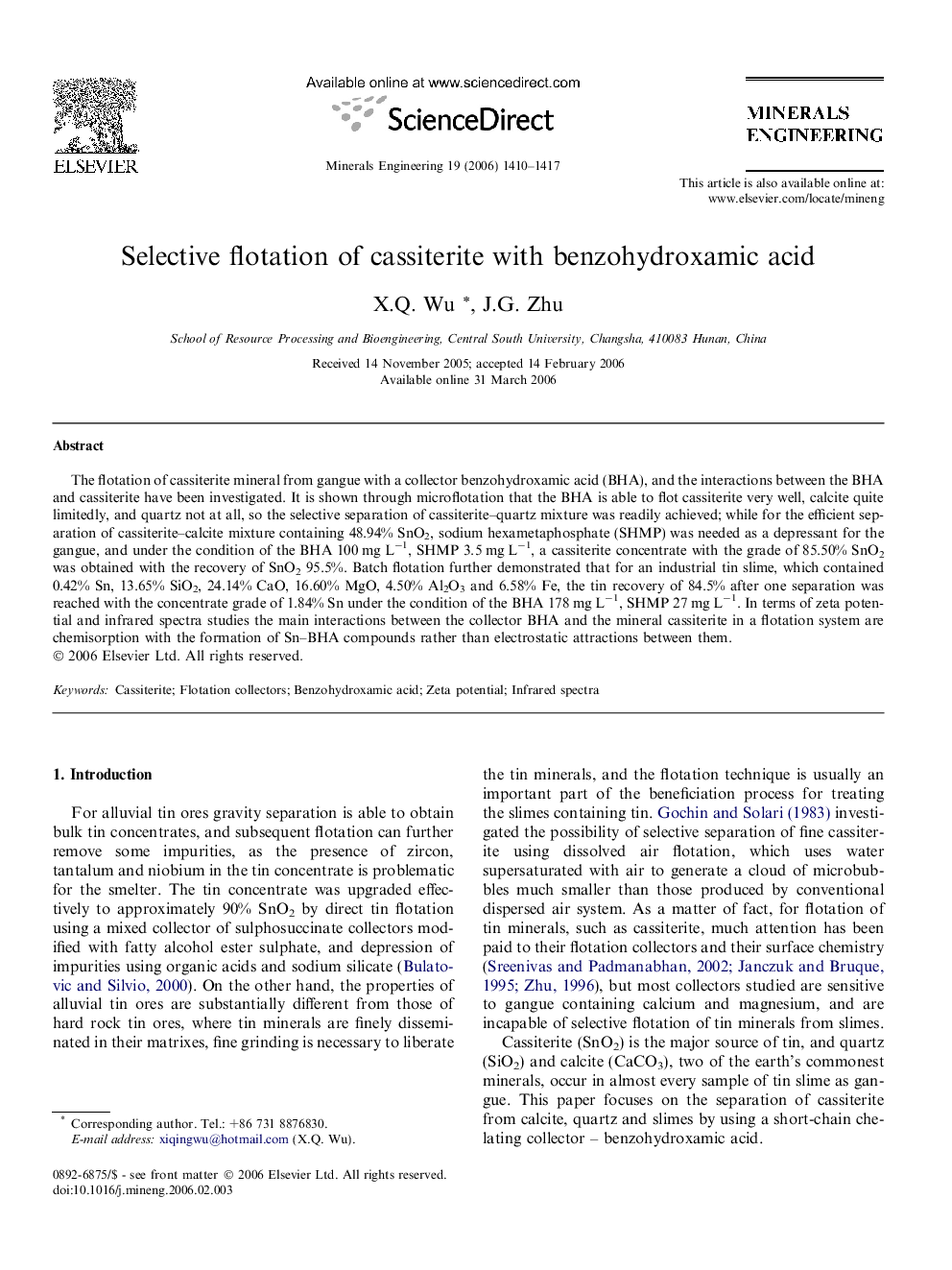| Article ID | Journal | Published Year | Pages | File Type |
|---|---|---|---|---|
| 234779 | Minerals Engineering | 2006 | 8 Pages |
The flotation of cassiterite mineral from gangue with a collector benzohydroxamic acid (BHA), and the interactions between the BHA and cassiterite have been investigated. It is shown through microflotation that the BHA is able to flot cassiterite very well, calcite quite limitedly, and quartz not at all, so the selective separation of cassiterite–quartz mixture was readily achieved; while for the efficient separation of cassiterite–calcite mixture containing 48.94% SnO2, sodium hexametaphosphate (SHMP) was needed as a depressant for the gangue, and under the condition of the BHA 100 mg L−1, SHMP 3.5 mg L−1, a cassiterite concentrate with the grade of 85.50% SnO2 was obtained with the recovery of SnO2 95.5%. Batch flotation further demonstrated that for an industrial tin slime, which contained 0.42% Sn, 13.65% SiO2, 24.14% CaO, 16.60% MgO, 4.50% Al2O3 and 6.58% Fe, the tin recovery of 84.5% after one separation was reached with the concentrate grade of 1.84% Sn under the condition of the BHA 178 mg L−1, SHMP 27 mg L−1. In terms of zeta potential and infrared spectra studies the main interactions between the collector BHA and the mineral cassiterite in a flotation system are chemisorption with the formation of Sn–BHA compounds rather than electrostatic attractions between them.
